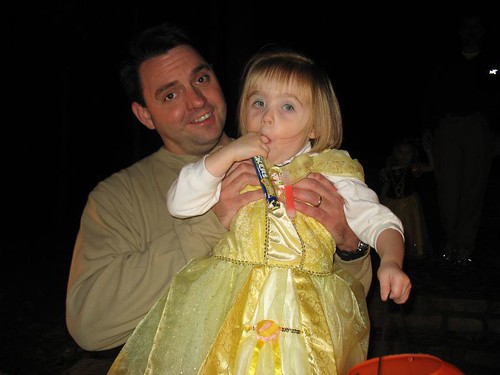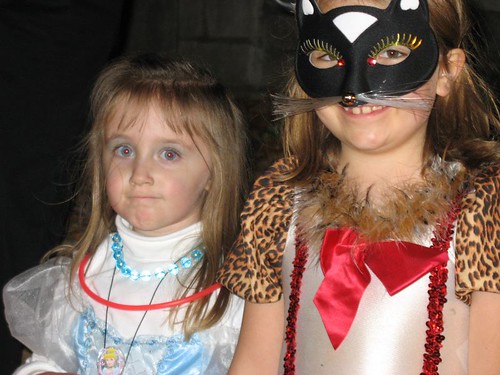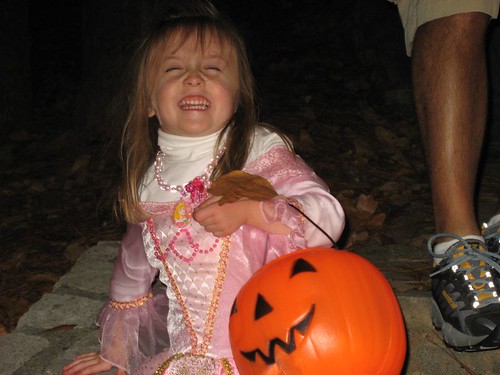Caroline and Uncle Russell:

Claire and Friend:

Catherine Enthralled with Halloween:

Neighborhood Ghost:

In the decades prior to the Singing Revolution, Estonians undertook similar protests each week in the offices and factories in which they worked. By coming together as a choir, they circumvented the laws which banned public demonstrations and political gatherings, and hid their message of discontent within the songsheets they passed around. “The company choir is something from the Soviet times, because in those days almost all factories and offices had a choir or at least an ensemble,” explains Tanner, “It was almost compulsory to join. But it was also popular. After work, people had nothing to do. There was no shopping, you couldn’t go abroad, but after work you had to do something. So it became very popular to gather in choirs.
“It was one of the few possibilities for people to meet each other, because other organized meetings were suspicious. But the choir was a legal form of gathering, and it was also a kind of protest. After the required communist songs, we could sing our own songs. I've made a change in our programming, believing that this repertoire will be our best foot forward:
I've made a change in our programming, believing that this repertoire will be our best foot forward:| | Warm-Up (In Chapel) | Performance (In Sanctuary) |
| 9:35 – 10:00 | | |
| 10:00 – 10:25 | Samford | |
| 10:25 – 10:50 | | Samford |
| 10:50 – 11:15 | Montevallo | |
| 11:15 – 11:40 | | Montevallo |
| LUNCH/REHEARSAL 11:40 – 1:10 | | |
| 12:50 – 1:15 | | |
| 1:15 – 1:40 | UAB | |
| 1:40 – 2:05 | | UAB |
| 2:05 – 2:30 | | |
| 2:30 – 2:55 | | |
| 2:55 – 3:20 | | |
| COMBINED CHOIRS 3:20 – 4:00 | | |
 I grew up in Natchez, MS . . . right across the river from Louisiana, where the world is different. At the time, I didn't realize how influenced I was by the Cajun flavors in food. There aren't many places to find Cajun food in Birmingham, I've discovered.
I grew up in Natchez, MS . . . right across the river from Louisiana, where the world is different. At the time, I didn't realize how influenced I was by the Cajun flavors in food. There aren't many places to find Cajun food in Birmingham, I've discovered. From Rick Philips, Highlands Methodist
From Rick Philips, Highlands Methodist Well, the second child and third member of the Copeland household just came down with the latest bug circling Birmingham. It started with Catherine, moved to wife Leigh, and now lies with Claire.
Well, the second child and third member of the Copeland household just came down with the latest bug circling Birmingham. It started with Catherine, moved to wife Leigh, and now lies with Claire. Ashley Arrington told me about her blog the other day and wanted me to share the news here.
Ashley Arrington told me about her blog the other day and wanted me to share the news here.
 A couple of updates:
A couple of updates: